With connected home technology on the rise, U.S. households are embracing smart devices more than ever – and so should marketers. According to a recent study by Amazon Ads, a staggering 90% of consumers own at least one smart media device, and over half of them use it to make purchases.
The prevalence of connected home devices and Connected TV (CTV) offers new ways for brands to engage with consumers at a deeper level, but it can be challenging for marketers to fully capitalize on the potential of these technologies.
Here at (amp), we’ve found connected TV advertising and home automation marketing to be powerful tools that could help your brand increase awareness and engagement. As they continue to change the landscape of brand interactions, it’s worth exploring the benefits and best practices when engaging audiences through connected devices.
So, first things first:
What Are Connected Home and CTV?
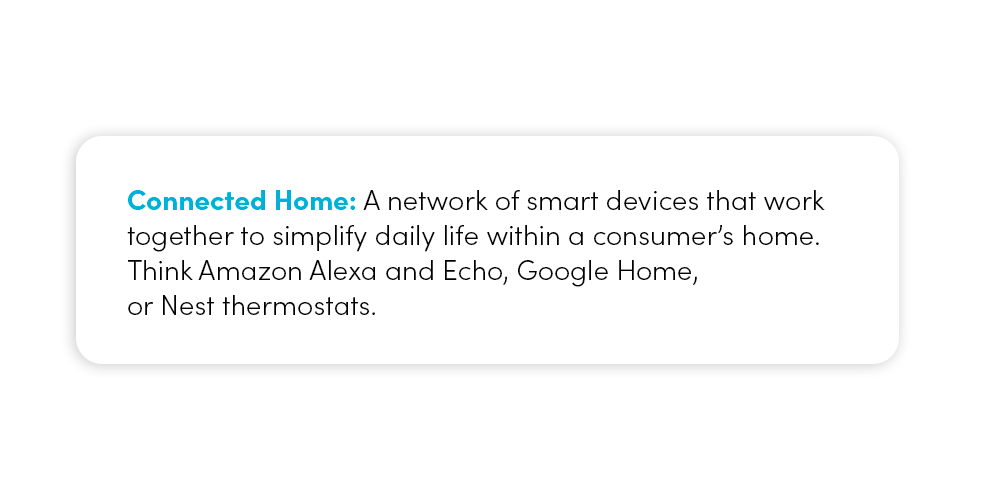
Even refrigerators and washing machines with built-in touchscreens or voice-activated controls. These devices are all part of the broader Internet of Things (IoT) ecosystem and allow consumers to incorporate smart features seamlessly into their routines. The integration of these devices into more areas of consumers’ lives throughout their day gives marketers the opportunity to better integrate their brand into their audiences’ lives through new, personalized touchpoints for audience engagement.
Think of a user who may ask for the weather in the morning from an audio device, search for a recipe on a smart fridge while cooking lunch and stream a show from a CTV at night. Now, think of the opportunity for marketers to personalize that user’s interactions with their brand by serving up ads that complement those activities and provide a simple path to purchase, like a voice-activated command.
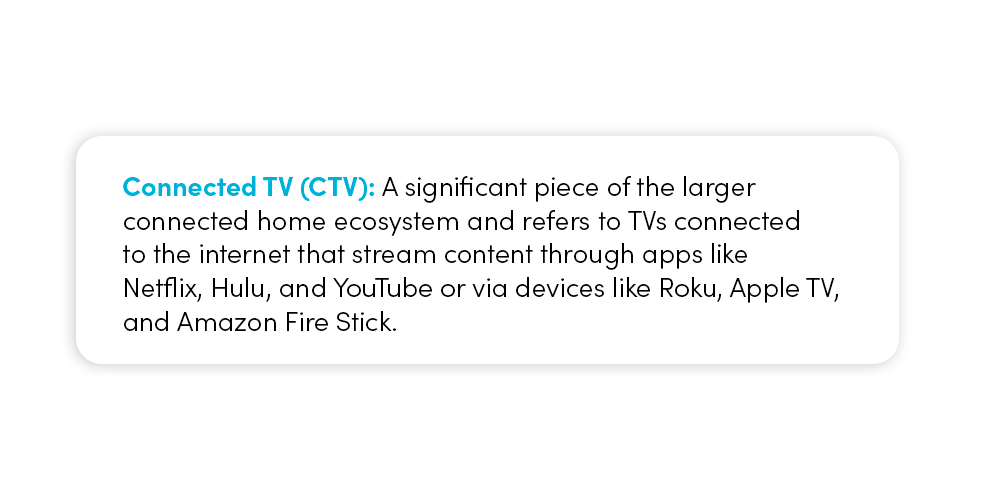
CTV offers audiences a flexible, personalized TV experience, allowing them to view content when they want, how they want, and with the quantity of advertising that they prefer, which are a few of the reasons why CTV is rapidly outpacing traditional (linear) TV delivered through cable or antenna. In fact, recent studies show that cord-cutter households will make up 72% of U.S. homes by 2025, not to mention the rising generation of “cord-nevers” whose only viewing experience has been through CTV and other devices.
As TV becomes more connected, so does advertising. CTV opens the door for interactive, targeted experiences that traditional TV couldn’t match. Studies have also shown that with the flexibility to choose from subscriptions or advertising tiers, audiences are far less opposed to viewing ads and more likely to recall those they’ve seen.
Why Do Connected Home and CTV Matter for Marketers?
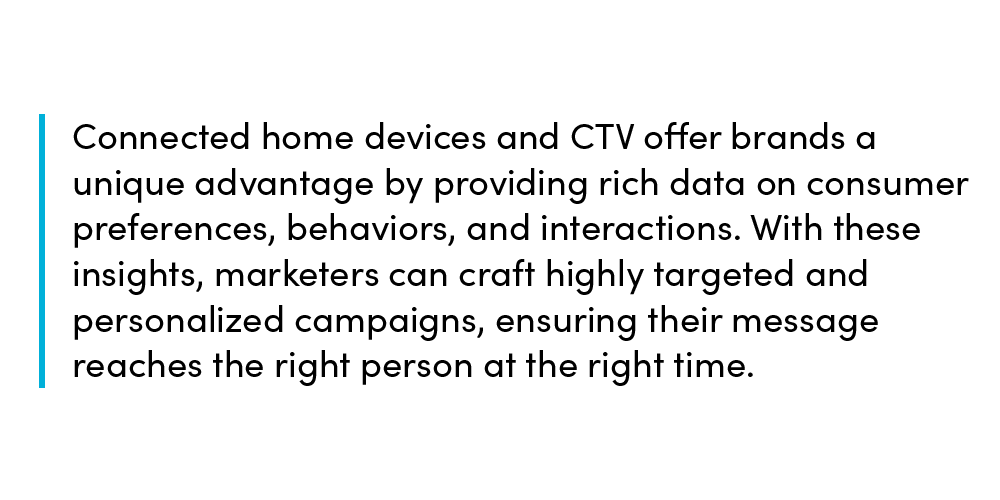
Additionally, these technologies offer unique and creative ad formats—such as interactive ads on CTV and voice-activated ads on connected home devices—that provide the path of least resistance for engagement. By analyzing voice search patterns or viewing habits to understand what interests their audience, brands can create tailored messages that will resonate the most and deliver them on the devices that provide the most opportunity for engagement.
Imagine a consumer who views an in-feed social ad as they scroll on their mobile device, which is then reinforced by a non-skippable ad for the same product delivered mid-stream during a show via CTV, and who then has the ability to order the product immediately with a voice command to Alexa or Google Home.
This kind of integrated, multi-device marketing gives brands the opportunity to engage with audiences at more touch points throughout the entire customer journey, extending the lifespan of a campaign and increasing conversion rates.
Best Practices for Your Brand
Incorporating new channels, like connected devices, into any marketing strategy can be daunting, but there are a few key guideposts that can help brands maximize the impact of connected TV advertising and home automation marketing.
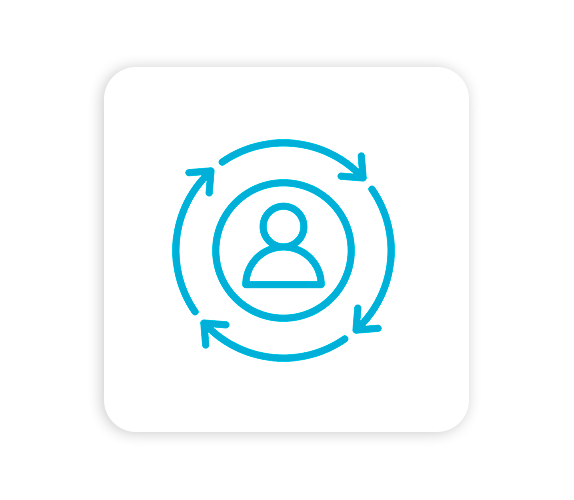
Personalize: Leverage the wealth of data available through connected home devices and CTV to develop ads that speak directly to your consumers’ interests and habits. Studies show that personalization not only improves engagement but also enhances an audience’s perception of a brand as relevant, trustworthy, and responsive to their needs.

Optimize: As your audience’s consumption behaviors continue to change, lean into the unique capabilities of connected devices by optimizing your campaign content for them. Integrating voice-activated prompts or shoppable CTV ads gives your consumers the ability to engage with a simple command or a single click.
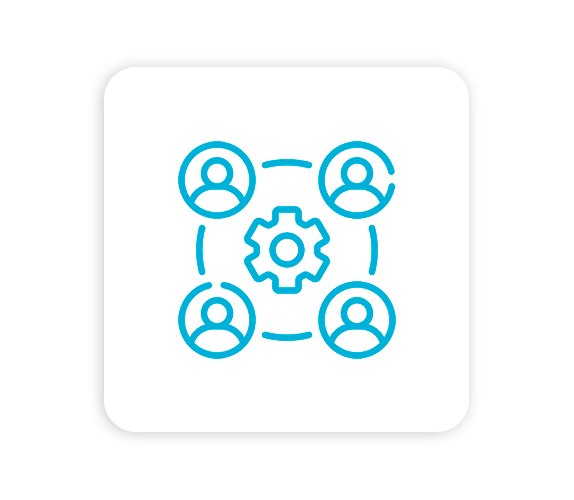
Coordinate: A connected consumer’s journey may span several devices throughout the day, so consistency is key. Coordinating campaigns across CTV, mobile devices, and smart home assistants can elevate your brand and provide a seamless experience for consumers that reinforces your message and strengthens brand recall.
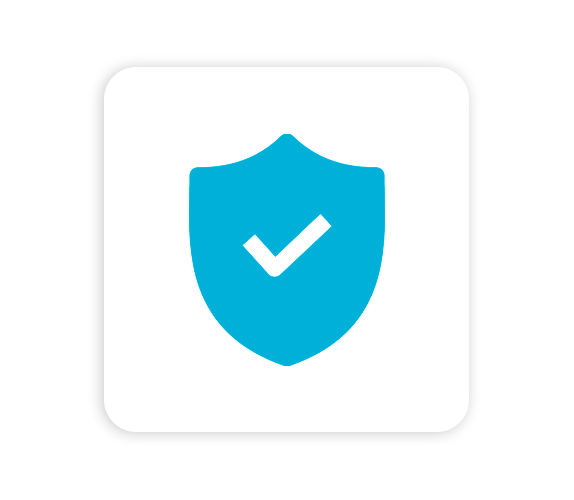
Protect: Interacting with consumers in the safety of their own homes requires a deep commitment to protecting their data and respecting their privacy. Safeguarding user data and maintaining compliance with all data privacy regulations, such as GDPR and CCPA, is essential to building trust with your consumers, fostering loyalty, and ensuring your brand remains welcome in their personal spaces.
How Should Brands Move Forward in a Connected World?
It’s clear that connected home devices, including CTV, have redefined the way consumers interact with brands, transforming home spaces into new marketing touchpoints. To connect with consumers more meaningfully, brands need to be strategic in their approach to the IoT ecosystem, especially when venturing in for the first time.
Leveraging data to create personalized, interactive, and targeted campaigns is essential to a successful connection with your audiences. The experts at (amp) are ready to help you start integrating connected home and CTV campaigns into your marketing strategy so you can make the most of your media dollar and matter more to your customers. Contact our team to get started today.
